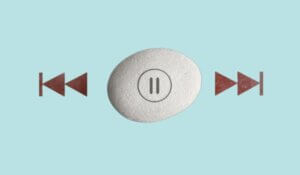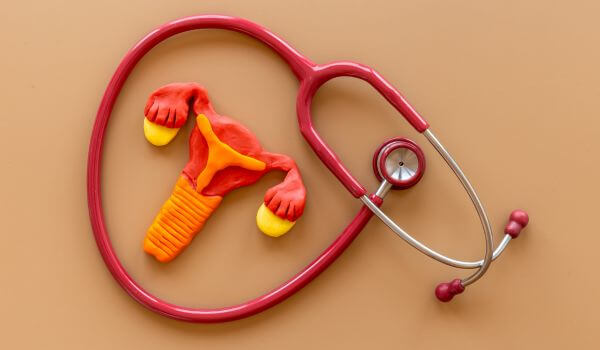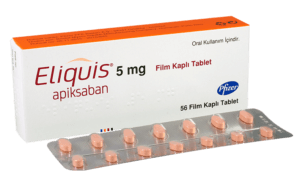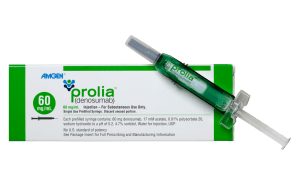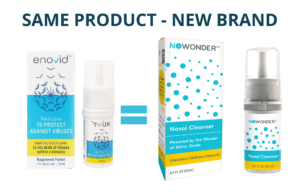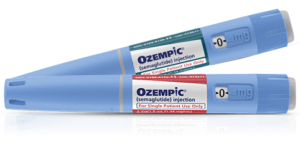 We often hear from customers with health-related questions, and we’re always happy to provide helpful, well-researched answers. Recently, one inquiry stood out—asking about andropause, a topic that even some of our own team members were curious about. This sparked deeper research and discussion, and we’re excited to share what we’ve learned.
We often hear from customers with health-related questions, and we’re always happy to provide helpful, well-researched answers. Recently, one inquiry stood out—asking about andropause, a topic that even some of our own team members were curious about. This sparked deeper research and discussion, and we’re excited to share what we’ve learned.
To start, here’s a slightly edited version of the original question (with all personal details removed):
| It started with fatigue. I felt more tired than usual, even after a full night’s sleep. I’ve always prided myself on my energy levels. But now that I’ve reached the early 50s, things have started to change. It’s not that I feel ill or have complaints that I can go to the doctor with and point to. I’m just not the same man I used to be.
These changes have been subtle, with small things that at first I simply chalked up to getting older. My motivation to work out has gone, and when I do manage to get to the gym, I can’t push myself like before. My muscles seemed to have shrunk while my waistline has expanded. Even my moods are different. I am more irritable and less patient, and I find myself struggling to focus on tasks that used to come easily. Then there was the one thing I can’t ignore. My sex drive, which had been solid my whole adult life, has taken a nosedive. I tell myself it’s just stress, but deep down, I fear something is “off.” Finally, my wife pointing it out to me has led me to finally decide to do something about it, but it’s not something I feel is serious enough to need an appointment with my family doctor. Looking at it realistically, I guess that more than anything, I felt embarrassed, almost as if I am having to admit defeat. You’ve always been so helpful with my questions over the last nine years as your customer, I’m hoping there is something you can tell me about what’s going on, and if there’s anything I can do to get the body working the old way. |
Our response aims to address not just the original question but also provide insight for all men experiencing the natural changes that come with aging.
Of course, it’s important to note that this information is general. When it comes to health concerns, nothing replaces a conversation with a trusted healthcare provider. Even if discussing personal topics feels uncomfortable, seeking expert advice is crucial—especially to rule out any underlying issues that may require medical attention.
More about andropause 
As men age, it’s not uncommon to experience a range of physical, psychological, and emotional changes that can be both surprising and challenging. Often equated to the more sudden phenomenon in women called menopause, this change is characterized by a gradual decline in testosterone levels, leading to various symptoms that can affect daily life. Unlike the abrupt hormonal shifts women face during menopause, men’s hormonal changes occur more subtly, making them less noticeable but equally impactful.
Understanding andropause
Testosterone, the primary male sex hormone, plays a crucial role in maintaining muscle mass, bone density, and sex drive. Starting in their 30s or 40s, men may experience a decline in testosterone levels, typically around 1-2% per year. This gradual decrease can lead to symptoms such as reduced energy, mood swings, decreased libido, and cognitive changes. It’s important to note that not all men will experience noticeable symptoms, and the severity can vary widely among individuals.
Common symptoms of andropause
The signs of andropause can be very different from one person to another, affecting both physical and psychological aspects of health. Common symptoms include:
- Fatigue: A persistent sense of tiredness or decreased energy levels.
- Depression or sadness: Feelings of low mood or a general sense of unhappiness.
- Decreased motivation: A lack of drive or interest in activities once found enjoyable.
- Lowered self-confidence: Feelings of inadequacy or reduced self-esteem, especially in relation to sexual performance and desire.
- Difficulty concentrating: Challenges in focusing or maintaining attention.
- Insomnia or sleep difficulties: Trouble falling or staying asleep.
- Increased body fat: Notable weight gain, particularly around the abdomen (belly fat).
- Reduced muscle mass and strength: A decline in physical strength and muscle tone.
- Gynecomastia: Development of breast tissue.
- Osteoporosis: Decreased bone density, with the bones becoming more fragile and susceptible to fractures.
- Erectile dysfunction: Difficulty achieving or maintaining an erection.
- Reduced libido: A decrease in sexual desire.
These symptoms can significantly impact a man’s quality of life, affecting personal relationships, work performance, and overall well-being.
Distinguishing andropause from other conditions
It’s essential to differentiate between symptoms caused by declining testosterone levels and those resulting from other factors such as stress, depression, or chronic illnesses. Conditions like obesity, diabetes, and cardiovascular diseases can exhibit similar symptoms, making diagnosis challenging. A thorough medical evaluation, including blood tests to measure testosterone levels, is crucial to determine the underlying cause and appropriate treatment.
Treatment options for andropause
Managing andropause involves a combination of lifestyle modifications, medical treatments, and psychological support. The approach depends on the severity of symptoms and individual health considerations.
Lifestyle changes
- Adopting a balanced diet rich in fruits, vegetables, lean proteins, and whole grains can help maintain energy levels and support overall health.
- Engaging in regular physical activity, including both aerobic and strength-training exercises, can improve mood, increase muscle mass, and boost energy.
- Establishing a regular sleep schedule and creating a restful environment (aka sleep hygiene) can alleviate sleep disturbances.
- Stress management techniques such as meditation, yoga, or counseling can help alleviate stress and improve mental well-being.
Testosterone Replacement Therapy (TRT)
For men with significantly low testosterone levels confirmed by blood tests, TRT with oral medications such as Androcur may be considered. This therapy aims to restore testosterone levels to a normal range, potentially alleviating symptoms like low libido, fatigue, and depression. TRT can be administered through various methods, including injections, patches, gels, or implants. However, it’s essential to discuss the potential risks and benefits with a healthcare provider, as TRT may not be suitable for everyone and can have side effects.
More about testosterone
Testosterone is the main hormone that determines the gender of a person right after fertilization. By default, the fertilized egg will grow up to be female unless there is a high level of testosterone in the very early stages of differentiation, triggered by the Y chromosome
Total T
Total T is a shorthand expression of the total level of testosterone present in the bloodstream, measured in a blood test. Most testosterone in the body is attached to either albumin or sex hormone-binding globulin (SHBG). There is normally only a small fraction of testosterone that is unbound to SHBG, and so is free to enter cells and exert its biological effects. This is referred to as bioavailable testosterone and it includes both free testosterone and the testosterone that is loosely bound to albumin, which can easily detach and become active. It’s the form of the hormone that can actually enter cells.
The level of bioavailable testosterone is important because it represents how much testosterone is readily available in the blood to be used in normal biological activity, like supporting muscle growth, influencing mood, and maintaining energy levels.
Boosting testosterone with simple medications

Psychological support
Counseling or therapy can be beneficial, especially for those experiencing mood swings, depression, or anxiety. Support groups, although less common for men, can provide a platform to share experiences and coping strategies.
The importance of open discussion
Men don’t talk about this situation enough. Societal expectations and traditional notions of masculinity often discourage men from expressing vulnerability or seeking help for issues perceived as personal or embarrassing. This silence can lead to prolonged suffering and a decline in quality of life. There’s still this stigma, like admitting you feel different somehow makes you less of a man. But taking care of your health, whether it’s your heart, your mental well-being, or your hormones, is one of the most masculine things you can do.
Encouraging open conversations about andropause within your family and with your healthcare supporters can help destigmatize the condition and promote early intervention. Healthcare providers should foster an environment where men feel comfortable discussing their symptoms without judgment. Educational initiatives can also raise awareness, helping men recognize the signs of andropause and understand that seeking help is a proactive step toward maintaining health and well-being.
Final thoughts.
Speak up! If you have concerns, remember that you’re not the only one going through this. A lot of men are suffering in silence, assuming it’s just part of aging. Maybe it is, but that doesn’t mean we can’t do something about it collectively. Because at the end of the day, it’s not about pausing your life. It’s about figuring out how to keep moving forward.
Typical questions to ask a doctor (and the likely answers)
Do I have low testosterone?
A blood test is needed to determine testosterone levels. This will check your total testosterone levels and something called bioavailable testosterone, which is the amount that’s actually usable by your body. If your levels are low, then doctors will consider treatment options.
What symptoms are most common in andropause?
Besides fatigue and low libido, common symptoms of andropause include mood changes, loss of muscle mass, weight gain, sleep disturbances, brain fog, and even osteoporosis in severe cases.
Don’t believe for a minute that osteoporosis is something only women have to worry about. While it’s true that they are more likely to develop this condition, there is still a substantial portion of the older male population that can grow into weaker bone structures, leaving them just as susceptible to fractures.
Could these symptoms be caused by something else?
Conditions like depression, sleep apnea, thyroid issues, or even side effects of medications can mimic low testosterone symptoms. That’s why consulting with a doctor about andropause is essential before jumping to conclusions.
Is testosterone replacement therapy (TRT) safe?
TRT is not a magic bullet, but for men with clinically low testosterone, it can help restore energy, muscle mass, mood, and libido. However, TRT has potential risks, like increased red blood cell count, acne, and even a slight risk of heart issues in some cases. These risks are primarily associated with oral medications, where the testosterone gets to be absorbed through the stomach, which requires generally higher dosing. On the other hand, an external cream like AndroForte gel delivers testosterone that’s absorbed through the skin in the area where it’s most effective, resulting in better delivery with fewer side effects.
Are there natural ways to boost testosterone?
Yes. Apart from direct action like TRT, lifestyle changes can make a difference:
- Strength training and high-intensity workouts can stimulate testosterone production.
- Eating healthy fats, like those in avocados and nuts, supports hormone levels.
- Prioritizing sleep. Seven to eight hours a night helps balance hormones.
- Managing stress keeps cortisol in check, which in turn helps testosterone.
- Losing excess weight can also improve testosterone levels.

